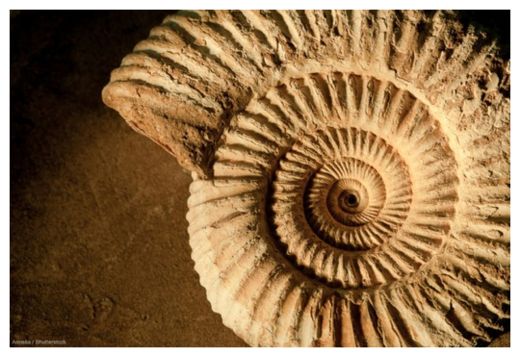
© Anneka / Shutterstock
New research from the
American Museum of Natural History shows that America's Great Plains region may have once been home to some typically sea-bound creatures.
Ammonites - a type of shelled mollusk, now extinct and closely related to the nautiluses and squids of today - may have lived in methane seeps when a seaway once covered America's midwest. The findings have been published online in the journal Geology, and shed some new light on how and where these ancient animals lived.
During the Late Cretaceous period, around 80 to 65 million years ago, scientists believe America was split into two land masses by the Western Interior Seaway. Sediments were deposited in this seaway, creating geologic formations in some parts of Montana, South Dakota, and Wyoming. As popular destinations for paleontologists, the researchers have narrowed their focus on a giant mound of fossilized material where methane-rich fluids are believed to have migrated through sediments onto the seafloor.
Here, the researchers have the shelled mollusks.
"We've found that these methane seeps are little oases on the sea floor, little self-perpetuating ecosystems," said Neil Landman, lead author of the paper published in
Geology and a curator in the Division of Paleontology at the American Museum of Natural History, according to a statement.
"Thousands of these seeps have been found in the Western Interior Seaway, most containing a very rich fauna of bivalves, sponges, corals, fish, crinoids, and, as we've recently documented, ammonites."
Landman and researchers are investigating a specific seep in the Black Hills with "extremely well-preserved" fossils dating back 74 million years.
"Most seeps have eroded significantly over the last 70 million years," Landman said. "But this seep is part of a cliff whose face recently slumped off. As the cliff fell away, it revealed beautiful, glistening shells of all sorts of marine life."
The researchers now hope to understand the roles of these ammonites in their unique seep ecosystem. As they studied the surrounding areas of the seeps, the research team noticed something interesting: an abundance of alternate forms of carbon, oxygen, and strontium suggest the ammonites spent their entire lives in the seeps.
Previously, it had been thought the ammonites were only there as passers-by.
Though the ammonites are thought to have been very mobile creatures, a wealth of plankton, the ammonites food of choice, may have kept them in the seeps, content to be where they were. Now with these findings, paleontologists are suggesting the methane seeps may have played a large role in supplying the Western Interior Seaway with plenty of creatures and fauna. The seeps may have formed mounds above the oxygen-deprived seafloor, therefore creating oases in an otherwise less-hospitable setting. This could explain why the ammonites were able to find a home in the seaway despite environmental disturbances.
"If a nearby volcano erupted and ash covered part of the basin, it would have decimated ammonites in that area," Landman said. "But if these communities of seep ammonites survived, they could have repopulated the rest of the seaway. These habitats might have been semi-permanent, self-sustaining sites that acted as hedges against extinction."
This is literally ancient history. One can take a stroll or drive into the desert of the US and find all sorts of fossils, petrified forests dormant volcanoes, gem stones, gold, silver, copper, native American burial sites, an asteroid impact crater and ghost towns. These can be found in Utah, New Mexico, Nevada, Arizona and California.